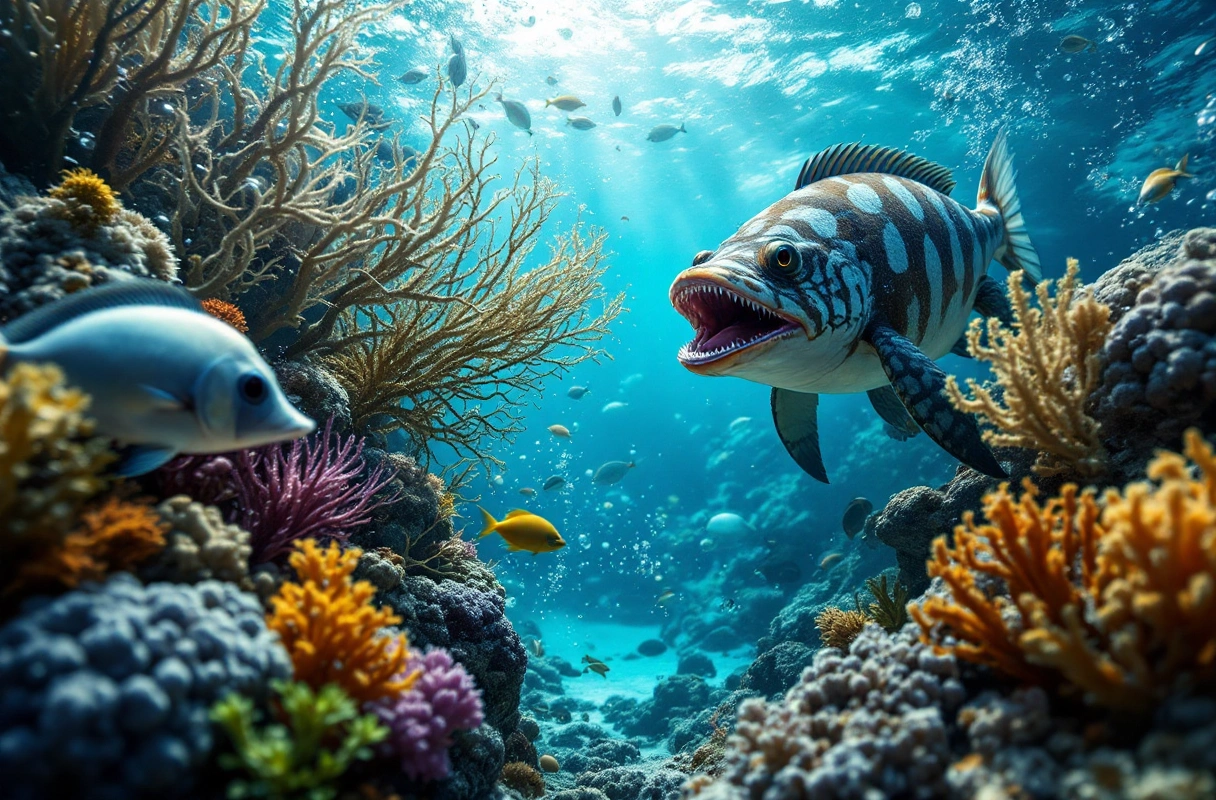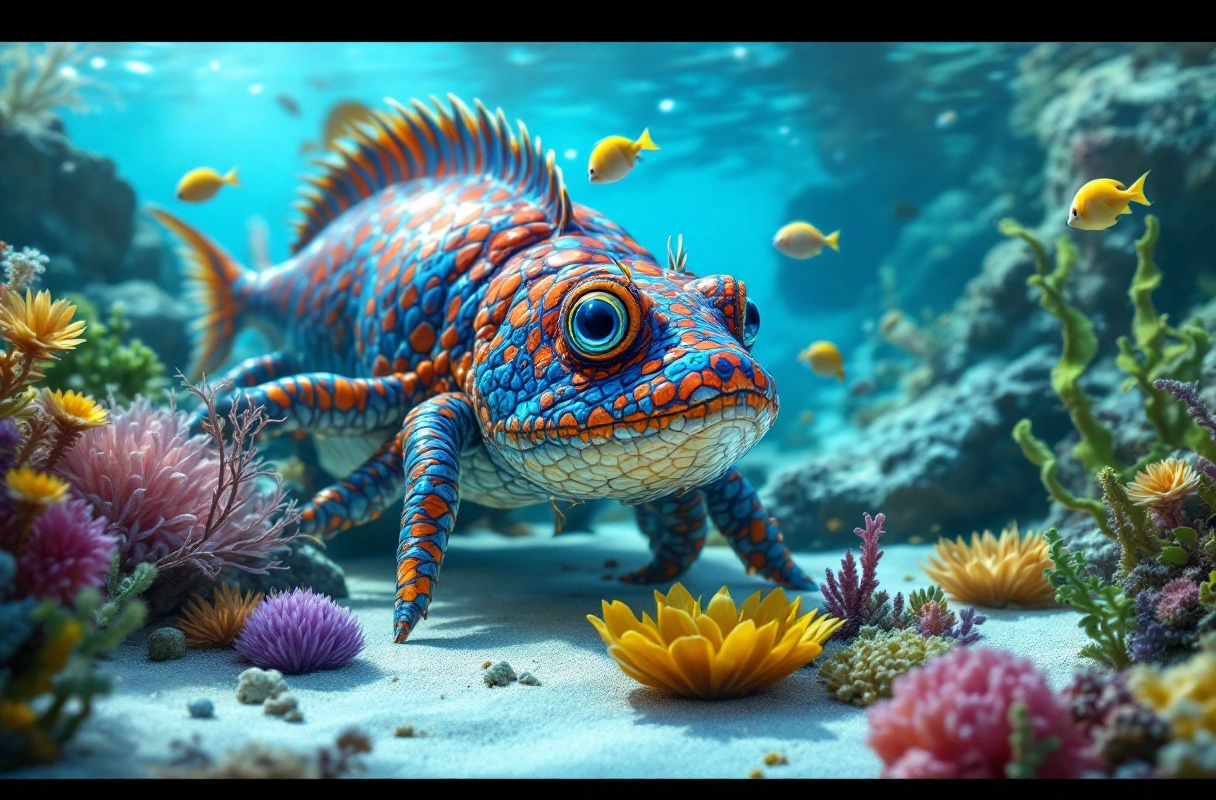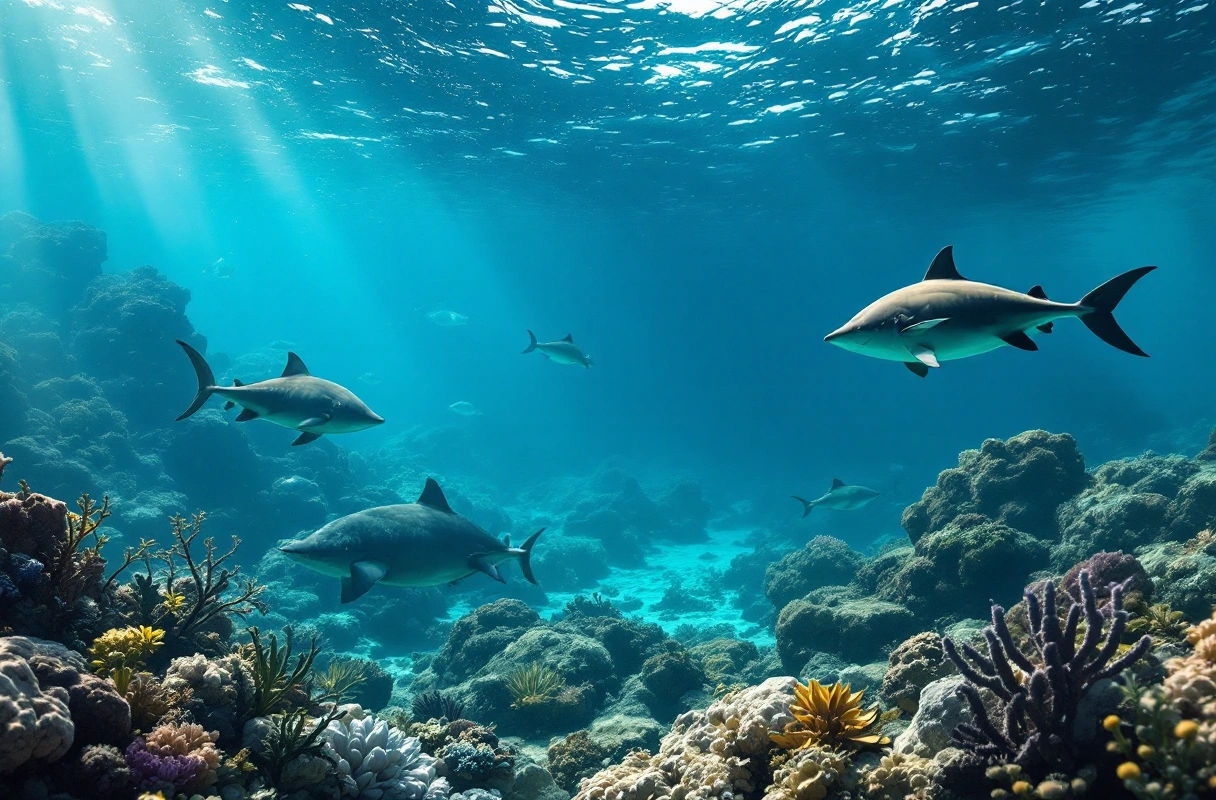
The ocean, covering over seventy percent of the Earth's surface, is a vast and mysterious realm teeming with life. Among its most captivating inhabitants are sea creatures—an astonishing variety of organisms that have adapted to thrive in diverse marine environments. From the vibrant coral reefs to the deep-sea trenches, these organisms exhibit a range of fascinating behaviors and characteristics that allow them to survive in their unique habitats. Understanding the ecosystems these sea creatures inhabit is essential for appreciating the delicate balance of marine life and the importance of support conservation efforts.
In this article, we will delve into the various types of sea creatures, explore their ecosystems, and examine how these organisms adapt to their environments. By the end, readers will gain insights into marine biology and the intricate relationships that define life beneath the waves.

The marine world is home to an incredible diversity of sea creatures, each with unique adaptations and ecological roles. Understanding this diversity is crucial for appreciating the complexity of marine ecosystems.
Fish
Fish are among the most recognizable sea creatures, with thousands of species ranging from tiny gobies to massive whale sharks. They play vital roles in aquatic food webs and are essential for maintaining the health of marine ecosystems.
Mollusks
This group includes creatures like octopuses, squids, and snails. Mollusks have developed various adaptations, such as camouflage and ink release, to evade predators.
Crustaceans
Crustaceans like crabs, lobsters, and shrimp are crucial for nutrient cycling in marine environments. Their hard exoskeletons provide protection and their diverse feeding habits contribute to the marine food web.
Echinoderms
Sea stars, sea urchins, and sand dollars belong to this group. Echinoderms have unique regenerative abilities and play essential roles in their ecosystems, such as controlling algal populations.
Marine Mammals
Whales, dolphins, and seals are warm-blooded sea creatures that rely on air for breathing. They are often at the top of the food chain and can significantly impact the populations of their prey. For more on these fascinating creatures, check out marine mammals.
Sea creatures are integral to the health of marine ecosystems. They contribute to the biological diversity and help maintain ecological balance. For instance, fish are not just food for larger predators; they also help control the population of smaller marine organisms, preventing any single species from overwhelming the ecosystem. Similarly, mollusks filter water, removing pollutants and contributing to clearer and healthier marine environments.
Furthermore, the interactions between different sea creatures—such as predator-prey relationships and symbiotic partnerships—create complex food webs that sustain marine life. For example, clownfish and anemones engage in mutualism, where both species benefit from their relationship. Understanding these interactions is vital for marine biology and conservation efforts.

Adaptation is a key concept in marine biology, as it explains how sea creatures thrive in their specific habitats. The ocean presents a variety of challenges, including varying temperatures, salinity levels, and pressures, which sea creatures have learned to overcome through remarkable adaptations.
Body Shape and Size
Many sea creatures have evolved specific body shapes to enhance their survival. For instance, streamlined bodies in fish reduce drag when swimming, while the flattened bodies of rays allow them to glide over the ocean floor.
Coloration and Camouflage
Camouflage is a common adaptation among sea creatures. For example, cuttlefish can change their color and texture to blend in with their surroundings, evading predators and surprising prey. This ability is a fascinating area of study in marine biology.
Sensory Adaptations
Many marine creatures have specialized senses to navigate their environments. Sharks possess an acute sense of smell that allows them to detect blood from miles away. Similarly, certain fish have electroreceptors that help them sense the electrical signals of other organisms.
Migration Patterns
Some sea creatures, such as whales and sea turtles, migrate thousands of miles between feeding and breeding grounds. This behavior is often driven by seasonal changes in food availability and reproductive needs.
Feeding Strategies
Sea creatures have developed diverse feeding strategies to exploit different food sources. For instance, filter feeders like baleen whales consume vast amounts of small organisms by filtering them from the water, while ambush predators like anglerfish use lures to attract prey.
Reproductive Strategies
Reproductive strategies vary widely among sea creatures. Some species, such as clownfish, exhibit complex social structures and breeding behaviors, while others, like many jellyfish, rely on sheer numbers, producing thousands of eggs to ensure the survival of a few.
Despite the wealth of knowledge about marine life, several misconceptions persist regarding sea creatures and their adaptations.
Myth: All fish are cold-blooded.
While most fish are indeed cold-blooded, some species, such as certain sharks and tuna, can maintain a higher body temperature, giving them an advantage in cooler waters.
Myth: Sea turtles are slow swimmers.
Many people believe sea turtles are slow due to their size, but in reality, they can reach speeds of up to twenty-five miles per hour in short bursts when threatened.
Myth: All jellyfish are dangerous.
While some jellyfish possess venomous stings, many species are harmless to humans and play crucial roles in their ecosystems.
Understanding these misconceptions is essential for fostering a greater appreciation of marine biology and the importance of protecting these ecosystems.

Marine ecosystems are vital not just for the sea creatures that inhabit them but also for the health of our planet. These ecosystems provide numerous benefits, including:
Oxygen Production
Phytoplankton, tiny plant-like organisms in the ocean, produce more oxygen than all the world's forests combined. Healthy marine ecosystems are essential for maintaining atmospheric oxygen levels.
Climate Regulation
Oceans play a significant role in regulating the Earth's climate. They absorb carbon dioxide and heat, helping to moderate global temperatures.
Economic Resources
Marine ecosystems support industries such as fishing, tourism, and pharmaceuticals. Sustainable management of these resources is crucial for long-term economic stability.
Biodiversity
Marine ecosystems are home to a significant portion of the Earth's biodiversity. Protecting these habitats ensures the survival of countless species and the ecological services they provide.
To preserve these vital ecosystems, conservation efforts must focus on sustainable practices and educating the public about the importance of marine life.
For those interested in exploring the fascinating world of sea creatures and their ecosystems further, there are numerous ways to get involved. Here are some actionable tips for diving deeper into marine biology:
Participate in Citizen Science Projects
Many organizations offer opportunities for individuals to contribute to marine research. Projects may include monitoring local marine life or participating in beach clean-ups.
Visit Aquariums and Marine Reserves
Visiting aquariums or marine reserves can provide hands-on learning experiences. Many facilities offer educational programs and interactive exhibits that can enhance understanding of marine ecosystems.
Pursue Education in Marine Biology
For those considering a career in marine biology, pursuing formal education in this field can open doors to numerous opportunities in research, conservation, and education.
Stay Informed
Following marine biology publications, documentaries, and online courses can help keep you informed about the latest research and developments in marine science.
By engaging with marine biology, individuals can contribute to the preservation of these vital ecosystems and the sea creatures that inhabit them.
Exploring the world of sea creatures and their ecosystems not only enhances our understanding of marine life but also highlights the interconnectedness of all living organisms. The Banana Slug Club is dedicated to fostering a love for nature and science among students, nature enthusiasts, and children. Through educational programs and resources, the club encourages exploration and appreciation of the natural world.
As you have learned about the incredible adaptations of sea creatures and the importance of marine ecosystems, consider how you can contribute to conservation efforts. The Banana Slug Club offers a platform for individuals to engage with nature, learn about science, and participate in initiatives that support environmental stewardship.
Whether you are a student eager to learn more, a nature enthusiast passionate about the ocean, or a child excited to discover the wonders of marine life, the Banana Slug Club invites you to explore further. Visit our website for more information on how you can get involved and support marine conservation efforts. Together, we can make a difference in preserving the diverse and intricate ecosystems that our sea creatures call home.
Get free resources, early access to new features and updates.
No spam. Just fun educational emails!